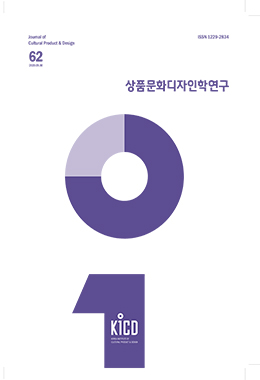본 연구는 하이테크 기술제품에 대한 소비자의 양가적 반응을 중심으로 자기효능감과 제품친숙도가 제품태도에 어떠한 영향을 미치는지를 살펴보았다. 하이테크 제품으로 스마트 워치를 연구자극물로 활용하여 소비자의 양가적 반응을 측정하였고 소비자의 긍정적 반응은 제품유용성, 부정적 반응은 사용복잡성과 변화에 대한 거부감이었다. 특히, 하이테크 제품에 대한 소비자의 부정적 반응이 자기효능감과 제품친숙도에 의해 조절되어 제품태도에 어떠한 영향력을 갖는지를 알아보는 것이 본 연구의 주요 목적이었다. 소비자의 스마트 워치에 대한 양가적 반응이 자기효능감이나 제품친숙도와 상호작용하여 제품태도에 미치는 효과를 살펴본 결과 제품의 사용복잡성은 자기효능감과 상호작용하여 제품에 대한 태도에 영향을 미치는 것으로 나타났다. 상호작용효과는 사용복잡성이 높은 조건에서 차이를 보이는데 자기효능감이 높은 조건이 낮은 조건보다 제품태도가 더 긍정적인 것으로 나타났다. 또한 변화에 대한 거부감과 제품친숙도의 상호작용이 제품태도에 영향을 미치는 것으로 나타났는데 변화에 대한 거부감이 높은 조건에서 제품친숙도가 높으면 제품에 대한 태도가 더 긍정적으로 나타났다. 자기효능감과 제품친숙도가 하이테크 제품에 대한 소비자의 부정적인 반응을 완화하는 역할을 하였다. 마지막으로 하이테크 제품에 대한 소비자의 부정적 반응을 줄이기 위해서 소비자의 자기효능감과 제품친숙도를 높이는 것이 중요한데 이를 위한 방안으로 제품에 대한 시연과 충분한 설명, 그리고 잦은 광고노출을 제안한다.
This study aimed at searching the relationship between product attitude and consumer’s ambivalent responses to high-tech technology products controlling self-efficiency and product familiarity. The smart watch was selected as stimulus material of this study and consumer’s ambivalent responses to smart watch were product usefulness, complexity of use and resistance to change. In particular, it was the main purpose of this study to find out how consumers' negative responses to high-tech products were controlled by self-efficiency and product familiarity. According to the results of study, it was found that the interaction effect of the complexity of use and self-efficiency appeared on the attitude toward smart watch. In particular, the condition with high self-efficiency was found to have a more positive effect on product attitude under condition with high complexity of use than under condition with low complexity of use. It was also shown that the interaction of resistance to change and product familiarity affected product attitude. Differences in product familiarity under conditions where resistance to change is low, showed no difference in product attitude, but under conditions where resistance to change is high, product attitude was found to be more positive than under conditions where product familiarity is low. The implications of this study suggest that in order to increase consumers’ accessibility to high-tech products, consumers should be given many opportunities to explain instruction of products and demonstrate before purchasing them, and that a lot of exposure of high-tech products is required through advertising to increase product familiarity as well as curiosity on products.




